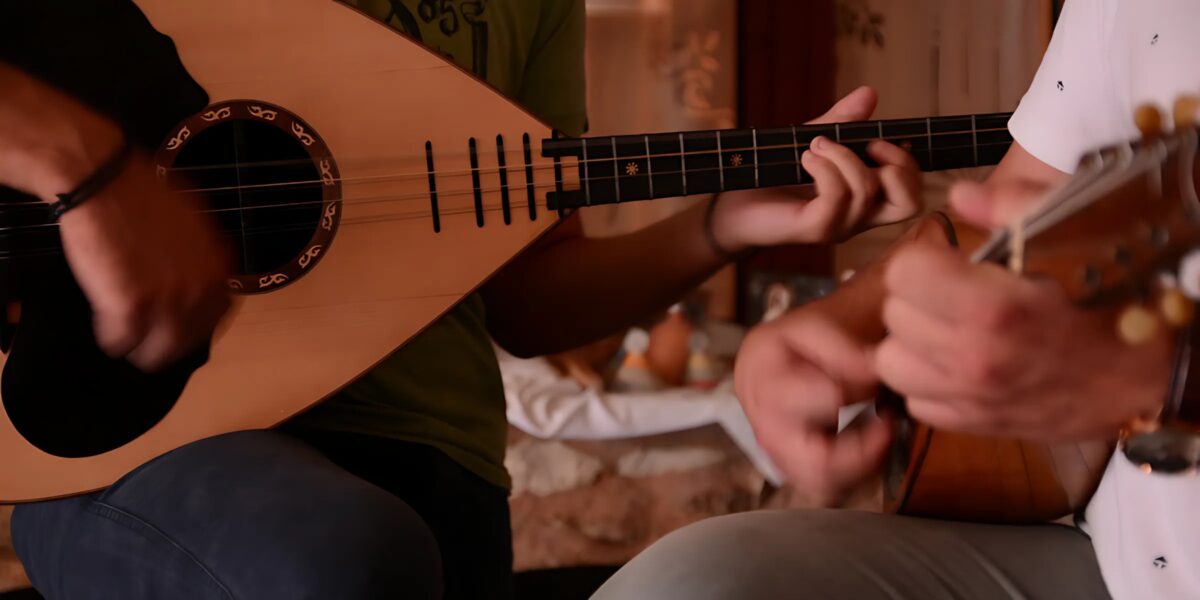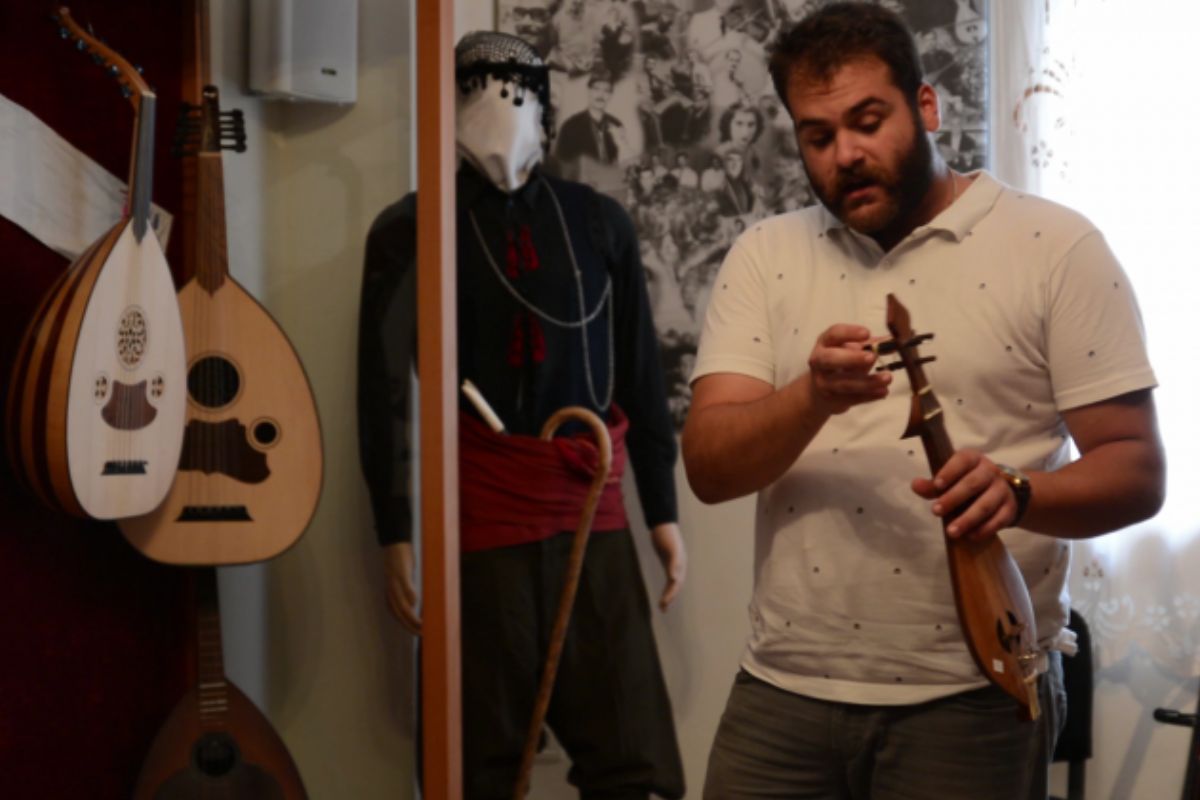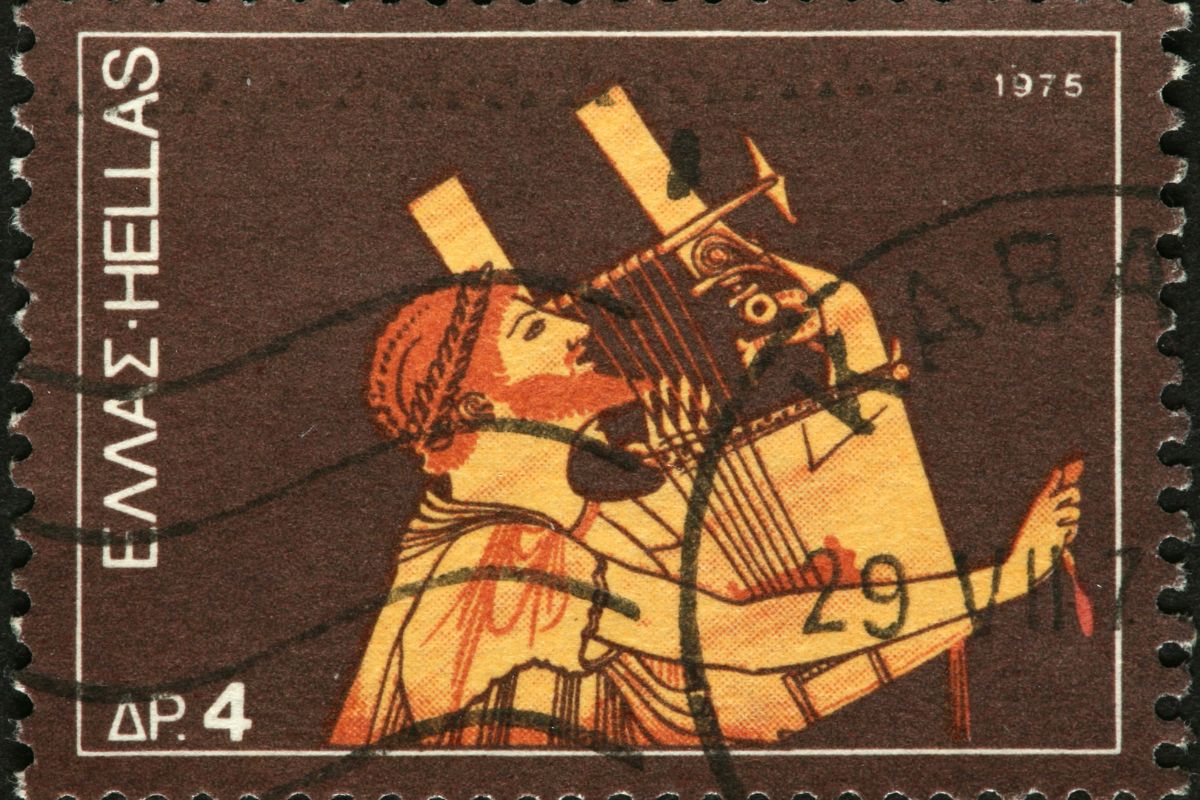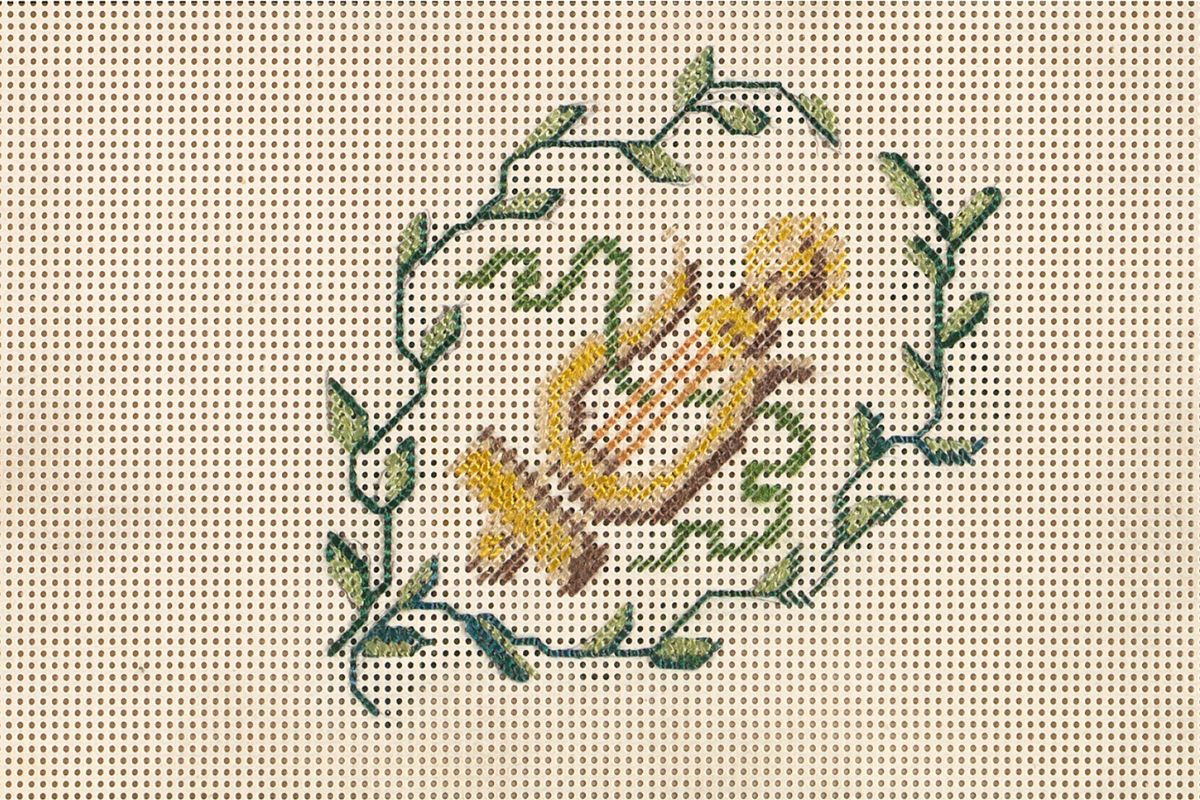Ancient Lyre: A Melodic Journey Through Time

The ancient Greek lyre is a string instrument that takes us to a time long ago.
Its history is in the myths and stories of ancient Greece. The ancient lyre has a beautiful shape and calming sounds that amazed everyone who listened to it. Join us to see how the lyre has changed, what it looks like, and why it mattered in old cultures.
The Origins and Evolution of the Ancient Lyre
The ancient lyre started a long time ago when early civilizations were forming. The first lyres were found in Mesopotamia, dating back to about 2700 BCE. These lyres are called eastern lyres. They had a flat bottom and were located in places like Egypt, Syria, Anatolia, and the Levant. The round-shaped western lyre also started in Syria and Anatolia, but it was not very common. It seemed to vanish from records around 1750 BCE. However, it appeared again in ancient Greece between 1700 and 1400 BCE. After that, it grew in popularity throughout the Roman world and changed into the lyres we recognize today.
Historical Significance in Early Civilizations
Evidence shows that lyres were important to ancient music in many cultures. In ancient Greece, this instrument had a major role in music contests at festivals like the Panathenaia, Pythia, and Karneia. These events show how crucial the lyre was in Greek music. Art from Greece, dating back to the 8th century BCE, often shows the lyre. This highlights its social and cultural importance. Outside Greece, people have found parts of lyres and other tools in the old Near East. The famous Lyres of Ur were found in Mesopotamia and go back to 2500 BCE. They are some of the oldest string instruments we know about. These finds show how popular and important the lyre was long ago.
More signs of the lyre in early cultures show up in ancient Egyptian objects and art. The ancient Greeks noticed some similarities between their lyres and the box instruments from Egypt. They called these instruments “kissar” (cithara).
Key Developments Over the Centuries
The lyre has changed a lot over time, just like many other string instruments. The number of strings has also changed. Some early lyres had only three strings. The newer models had seven or even ten strings. This change shows how music styles moved and how the lyre adjusted. At first, people tuned early lyres by moving the strings on the crossbar. Over time, they started using wooden tuning pegs. These pegs were made from strong woods, like ebony or mulberry, which made it easier to adjust the string tension. This change helped players hit different notes and kept the instrument in tune.
As the lyre traveled through different cultures and times, it formed several local types. In ancient Greece, lyres had beautiful decorations. In other parts of Europe, simpler and trendy lyres came about. Each type shows different styles and music traditions, but they all keep the main features of the instrument.

Design and Construction of an Ancient Lyre
The lyre is beautiful because it has a nice and useful design. Picture a shape made to echo, often made from tortoise shell, which gives it a great sound. From this main part, two wooden arms stretch out and curve gently forward, showing how nice the instrument feels. A bar called the yoke connects the arms at the top. This adds strength to the lyre. At the bottom of the arms, there is another bar known as the bridge. It keeps the strings in place. This part helps the strings move. It sends the sound to the resonant body, creating music.
Materials Used in Ancient Times
The lyre was made from materials that were easy to find many years ago. Its hollow body, often made from a tortoise shell, showed a lot of skill. The shape of the tortoise shell helped the sound become louder. The arms of the lyre were made from wood, which made it look nice. Sometimes, these wooden arms were designed like animals or had interesting shapes. This showed the art and culture back then. The strings were usually made from sheep gut, giving the lyre a warm and powerful sound. Some lyres had a wood soundboard. This showed a good understanding of sound and a wish to improve the lyre’s tone. By using natural materials well, the lyre could make lovely and deep sounds.
Variations Across Different Cultures
The lyre is popular in many cultures, and we can see it in different styles. Greek lyres are famous for their beautiful shapes and details. They show the art of ancient Greece. These lyres often have bodies made from turtle shells and are carefully decorated, showing the skill of the makers. On the other hand, box lyres have a body that is shaped like a box. This design creates a unique sound. This style is often seen in Egyptian and Near Eastern lyres, which keep the basic form of the lyre.
European lyres developed from these older types, changing to fit the music styles of their regions. These different kinds of lyres show how unique their designs can be. They also prove that the lyre has a lasting appeal and can change over time. From the heart of ancient civilizations to various places in Europe, the lyre is found in many cultures. Each one brings it’s a unique touch to the design and sound.
The Role of Lyres in Ancient Societies
The ancient lyre was more than just a musical instrument. It was important for old societies and was part of daily life, religion, and stories. It played a big role in religious ceremonies, making these events feel one-of-a-kind and magical. The lyre was a regular part of everyday life. People used it at poetry readings and social events. It also played a role in education. Its ability to fit in many settings made it popular with different groups of people.
In Religious and Spiritual Rituals
The beautiful sounds of the lyre were very important in ancient Greek religious and spiritual ceremonies. People often connected this instrument with the god Hermes. He was usually seen carrying a lyre. This connection made its music magical. You can picture the gentle music from the lyre playing a big role in ancient ceremonies. It brought feelings of respect and wonder. Hermes, the messenger between people and gods, gave the lyre even deeper meaning. The lyre often appeared with Apollo, the god of music and poetry. This strong connection made the lyre an important part of ancient Greek music. Because it was used in meaningful places, the lyre became more than just a musical instrument. Its music became a way for people to share prayers and feel closer to the gods.
As a Symbol of Authority and Knowledge
The lyre stood for power and knowledge. Pictures often featured leaders, thinkers, and gods with a lyre. This showed their wisdom and important role in society. Professional musicians were very important in ancient Greek society. Playing the lyre needed a lot of practice and skill, so its players earned great respect. They used their music to tell stories, record histories, and express emotions. That is why the lyre was considered a valuable instrument. The lyre was linked to learning. Young men in ancient Greece learned music as they grew. The lyre was the main instrument they used.
Ancient Greek Lyre in Greek Mythology
The lyre is more than just an old music tool. It is closely linked to Greek tales about the gods. This instrument has a deep connection to the gods, and the clever god Hermes created it. In the story, Hermes wanted to brighten his brother Apollo’s day. He gave Apollo a lyre made from a turtle shell and sheep skin. Apollo loved the sweet music from the lyre and forgave Hermes. This made the lyre an important symbol of Apollo’s power in music and poetry. The Muses are goddesses who inspire arts. They loved the lyre. You often see them playing or holding lyres. This shows their link to creativity, knowledge, and the quest for art.
Who is the Most Important Player of the Lyre in Greek Tales?
In Greek tales, many characters are linked to the lyre. The best-known player is Orpheus. People believe he got his music skills from the Muses. He became so skilled that his music could touch even the hardest hearts. Orpheus’ story is tied to the magic of his lyre. His music could move stones, calm wild animals, and even reach the hearts of the gods. But this great talent brought him to a sad fate in the underworld when sadness took over his beautiful music. This story has been shared for many years. It shows that the lyre does more than play music and can touch the soul. Finally, this shows the heart of Greek myths by exploring love, loss, and the power of art.

Notable Ancient Lyres Throughout History
The lyre has been here for a long time. It gives us many stories and items. Each one shares a tale of how the lyre changed over time and the cultures it affected. We can see two famous lyres. The first one is the Lyre of Hermes, which comes from Greek stories. People say that Hermes, the messenger god, made this instrument. It stands for creativity and helps bring people together. The second one is King David’s Lyre. This lyre appears in art and text. It shows its important influence even in biblical times.
The Lyre of Hermes
In old stories, the clever Hermes is said to have made the lyre. The story goes that Hermes, a young god, took a herd of rare cows belonging to his brother, Apollo. To calm Apollo’s anger, Hermes made a lyre from a tortoise shell. He used sheep gut for the strings and carved the arms out of wood. When Apollo heard the nice sounds of the instrument, his anger disappeared. He was drawn to the beautiful music. Apollo was so moved by the lyre that he forgave Hermes. He also let go of his claim to the cattle to have the instrument. This story is about how the lyre was made. It shows how the lyre can make people feel calm and happy. The Lyre of Hermes was passed from one god to another. It became a symbol of peace, creativity, and the powerful force of music.
King David’s Lyre
Moving from tales of gods to those in the Bible, we find King David’s lyre. This famous instrument appears in religious art, showing its importance in ancient Israel. We may not have its physical form now, but we can still find it in Bible texts and cultural images. King David is well-known for his talent in leading, writing, and being loyal. He is also recognized as a great lyre player. The story says his music was so powerful that it could calm King Saul’s anxious mind. His link to music, faith, and leadership made the lyre a valued instrument for its emotional and spiritual impact.
Even though we can’t find real proof of King David’s lyre, it is important in art, stories, and our thoughts. This shows us how popular the lyre was and how it can connect people from different backgrounds. The lyre represents faith, music, and the feelings we all share.
Elissos ancient Greek Music Lab
We suggest the experiential exploration of the ancient Greek music through a lab which you can embody in your Crete day tour. Our lab on the ancient Greek Music has a duration of two hours, it is conducted by an awarded Academic of Musicology and consists of two parts, a theoretical and an interactive part. The theoretical part introduces the ancient Greek music to you through a lecture. Through an interesting slide show in private studio you will find out all about the ancient Greek musical instruments, musical forms, ancient Greek modes and moods, the harmony of the spheres and the ancient Greek musical notation. We will present and analyze surviving pieces of ancient Greek music that excavations uncovered in different parts of Greece.
The second part is an interactive part, during which you will experience a coordinated interactive attempt on playing yourselves copies of ancient Greek percussion musical instruments directed by our Musicologist. Sounds great?! Ask us more at www.elissos.com!
The ancient lyre is an interesting part of our music history. It shows how important it was in culture and history. The lyre has changed over time and played a big role in early societies, shaping music and social life. People used it in religious events, and it symbolized power. Its beautiful sounds still touch people’s hearts today. When we learn how people made the lyre and what effects it had, we see their great creativity. Let’s enjoy the lovely music from the past and explore the lasting charm of the ancient lyre.

Frequently Asked Questions
How did the old lyre affect today’s musical instruments?
The old lyre may not be a close relative, but it was important in shaping today’s musical instruments. Its tuning pegs made it easy to adjust how tight the strings were. This change significantly affected how future stringed instruments, like violins and guitars, developed.
Can you play today’s music on an old lyre?
The ancient lyre is a string instrument that can play modern music, but it needs some changes. It has a few strings, and its tuning uses old methods. This means you may need to make adjustments. Still, the lyre is adaptable. It helps people find new ways to mix ancient music with today’s sounds.
What issues do we have when trying to fix an old lyre today?
Rebuilding an old lyre comes with its own challenges. You need to find real materials, such as tortoise shells. It’s important to get the design right. You have to balance history with what modern musicians want. This job requires a lot of research, skill, and knowledge of old music methods.

